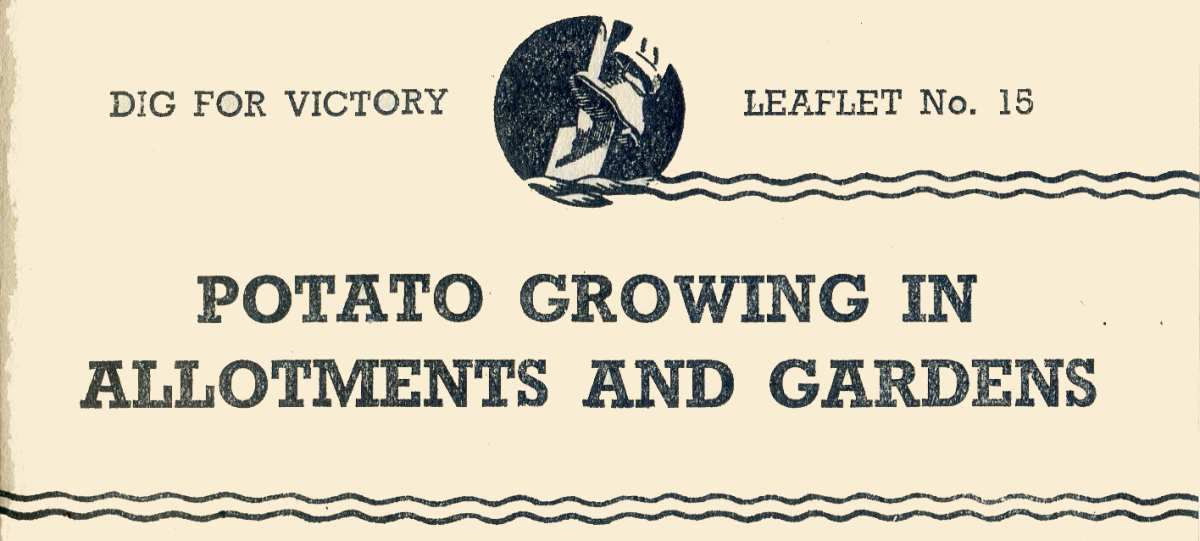 POTATO GROWING IN ALLOTMENTS AND GARDENS
POTATO GROWING IN ALLOTMENTS AND GARDENS
DIG FOR VICTORY LEAFLET No. 15 (Page 1 of 4)
POTATOES yield a generous return for a small outlay in money.
Comparatively small areas of land produce sufficient for home requirements : nine rows (3 early, 6 maincrop) are recommended for a 30 ft. X 90 ft. allotment in ” Dig for Victory ” Leaflet No. 1.
Persons without gardening experience can grow potatoes, provided the following main points are observed.
With soil previously used for growing vegetables, the initial work consists of digging the land deeply in the autumn and leaving it in a rough state so that much of the soil is exposed to the action of the weather. This helps to secure a good tilth. In addition, the digging will expose many injurious insect pests to the birds.
New land, usually unbroken turf, requires special treatment, for most of its natural fertility lies in the turf and top soil, and the sub-soil is usually poor. It is a mistake to pare off the turf and stack it in a heap with the idea of avoiding damage to crops that might result from pests, such as wireworms and leather jackets, in the turf.
Any possible gain made in this way is considerably outweighed by the loss of fertility.
When breaking up fresh land, therefore, all turf should be dug-in. If this is done, rotting will take place rapidly.
On Newly Dug Land
Double digging or bastard trenching is recommended. By this method the top spit of fertile soil is retained on the surface and the sub-soil is improved without bringing it to the top. As work proceeds, the turf is pared off thinly, and placed under the top spit of soil.
There’s an excellent, in depth, explanation of digging and bastard trenching in Dig for Victory Leaflet No 20 – How to Dig
Naphthalene is, of course, banned nowadays and the use of soil insecticide is counter-productive long term as it was an indiscriminate killer destroying both friend and foe. One organic and surprisingly effective method of coping with wireworm, which are always a problem when breaking pasture, is burying sacrificial half-potatoes with the crop. These are dug up and burnt.
When double digging any plot of regular shape, it is best to divide it lengthwise into two sections. Begin by taking out a trench 24 in. wide and 12 in. deep across the end of one section. The excavated soil should be removed to the same end of the other section, where the work will finish.
The exposed sub-soil is then forked to a depth of about 10 in. and on this the turves taken from the next 18 in. width of the land are placed grass-side downwards. Chop up the sod with the spade, and if, as indicated by the presence of wireworms or leather jackets, a soil insecticide is required, sprinkle well with naphthalene at the rate of 2 oz. per square yard. (A sharp look-out should be kept for pests when digging, and as many as possible should be collected and destroyed.) The exposed 18 in. width of top soil is then dug and thrown forward on to the inverted turves.
This process is repeated throughout the length of the first section ; the second section is then dealt with similarly. The work is completed by filling up the working trench with the turf and soil taken from the first trench on the first section.


